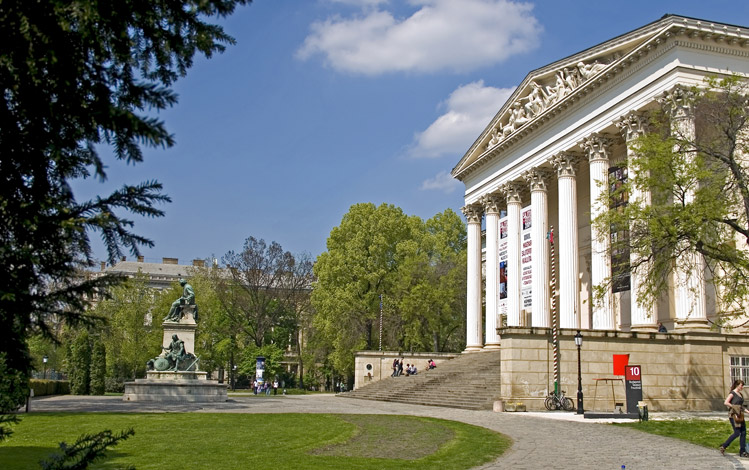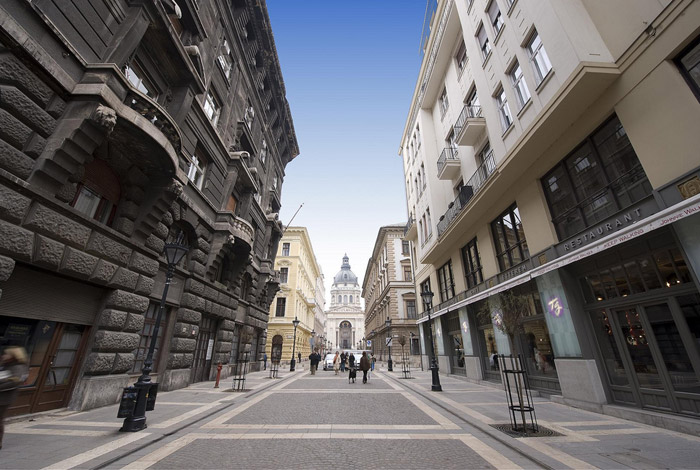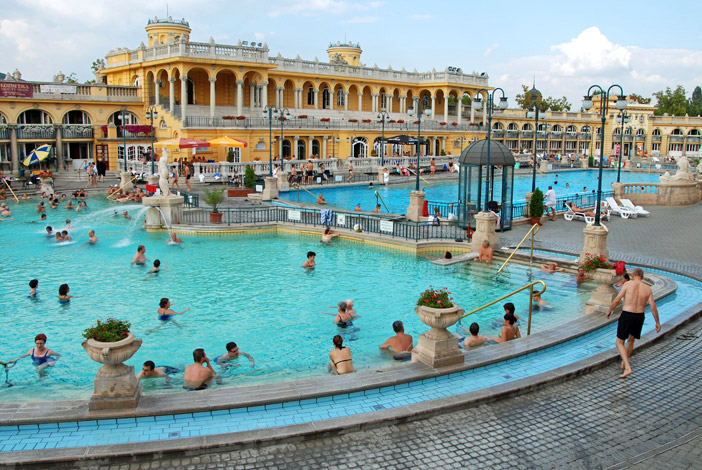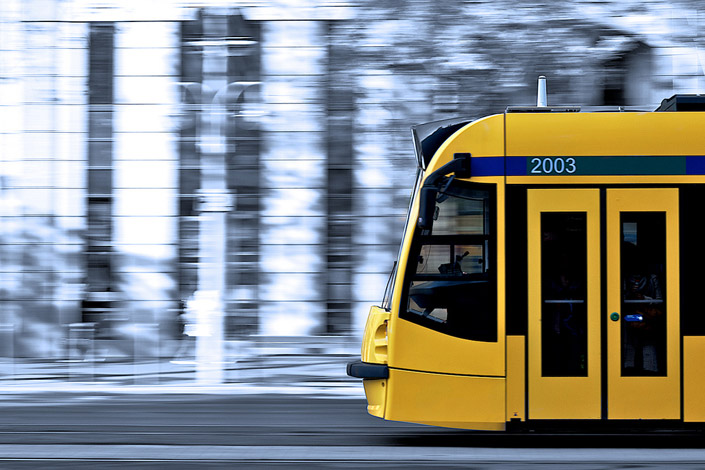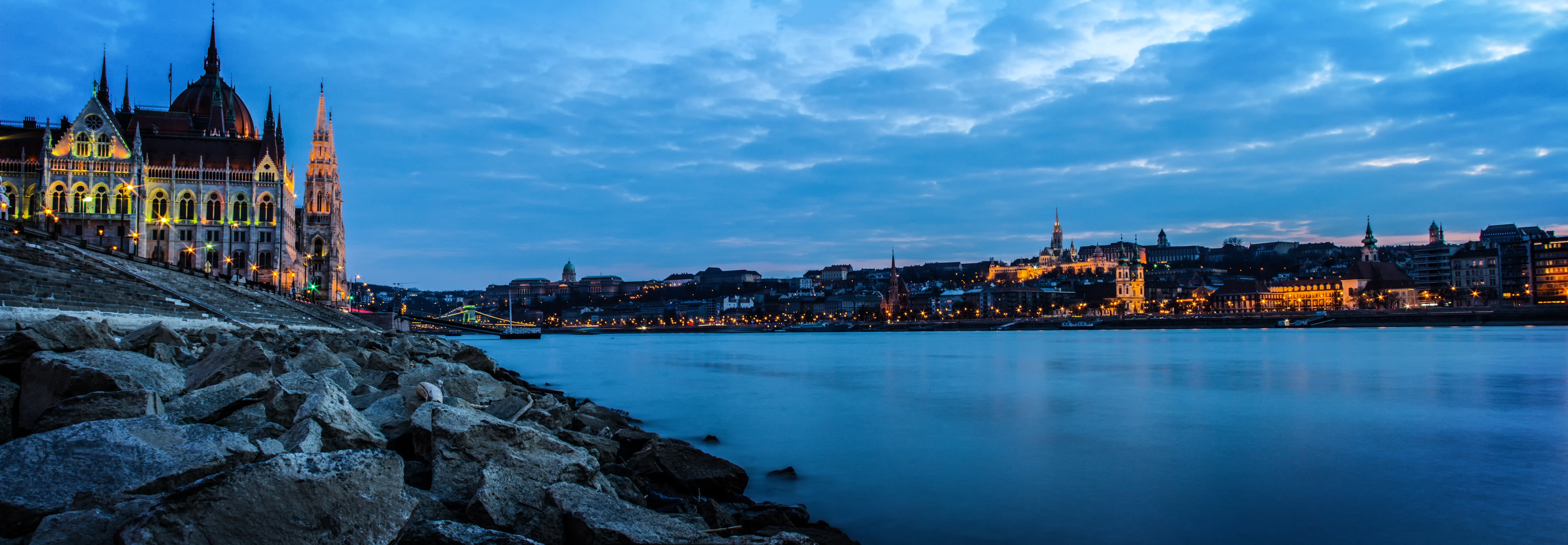
ABOUT BUDAPEST
Hungary is a landlocked country of 93,030 km2 area in Central Europe, in the middle of the Carpathian Basin. It is bounded on the north by Slovakia; on the northeast by Ukraine; on the east by Romania; on the south by Serbia, Croatia, and Slovenia; and on the west by Austria. Two major rivers: the Danube and the Tisza flow across the country from north to south. Lake Balaton, the biggest lake in Central Europe is a favourite target of tourists because of its warm water and nice landscape. Remains from both Roman occupation and much later ruled by the Turks can still be seen in the city. After the Ottoman Empire the union with Austria has a particular influence on the city’s form and style.
Budapest have three main parts, Óbuda, the oldest part with Celtic and Roman ruins, Buda with the hills, the most famous area is the historical Castle Hill and beautiful residential area, and the third one is bustling Pest with its shopping, government and commercial districts on the flat plain of the east bank.
The population of Budapest is about 1.774 million, 17% of the country’s population. Women contribute more than half, 54% of the population.
Parks and green areas are the most popular places of recreation. Of the total area of Budapest 13.4% is forest and 2.3% is parks. Margitsziget, or Margaret Island is one of the most popular places of recreation. From spring to autumn, hundreds of people visit the island to find rest or active recreation among its trees and bushes. Surrounded by the Danube, the island’s 5.3 kilometres circumference is eminently suitable for running, jogging or cycling.
The City Park on the Pest side hosts several major events every year. Created originally to serve as a site for the Millennium Celebration in 1896, the park near downtown Budapest offers entertainment to local people and visitors alike with its monuments, ponds, outdoor restaurants and cafés. Its lanes and alleys and open spaces are is also favoured by sport lovers: cyclists, roller skaters and joggers. Cited as one of the most beautiful cities in Europe, its extensive World Heritage Site includes the banks of the Danube, the Buda Castle Quarter, Andrássy Avenue, Heroes’ Square and the Millennium Underground Railway, the second oldest in the world. Other highlights include a total of 80 geothermal springs, the world’s largest thermal water cave system, second largest synagogue, and third largest Parliament building. The city attracts about 2.3 million tourists a year.
HISTORY
The Budapest you’ll see today is the result of many years of rich history, with traces of inhabitation dating back as far as the second millennium BC. Hungarian tribes arrived at the end of the ninth century and the Hungarian Kingdom was established in 1000. The city as we know it today was formed through the joining of Buda, Pest and Old Buda, back in 1873. The peace treaty of 829 added Pannonia to Bulgaria due to the victory of Bulgarian army of Omurtag over Holy Roman Empire of Louis the Pious. Budapest arose out of two Bulgarian military frontier fortresses Buda and Pest, situated on the two banks of Danube. Hungarians led by Árpád settled in the territory at the end of the 9th century, and a century later officially founded the Kingdom of Hungary. Around the year 1000 Stephen (István) I, King of Hungary, organized a feudal state on the Central European model and introduced Christianity. A few years later merchants from central and western Europe settled in Buda and Pest and helped both places to develop rapidly. The Tatar invasion in the 13th century quickly proved that defence is difficult on a plain. King Béla IV of Hungary therefore ordered the construction of reinforced stone walls around the towns and set his own royal palace on the top of the protecting hills of Buda. In 1361 it became the capital of Hungary. In 1526, after their victory at Mohács, the Turks took Buda and Pest. Under Sultan Süleyman I (the Magnificent) many churches were converted into mosques, fine bath-houses constructed and defensive works modernized. Buda became the seat of a Grand Vizier.
In 1686, two years after the unsuccessful siege of Buda, a renewed campaign was started to enter the Hungarian capital. This time, the Holy League’s army was twice as large, containing over 74,000 men, including German, Croat, Dutch, Hungarian, English, Spanish, Czech, Italian, French, Burgundian, Danish and Swedish soldiers, along with other Europeans as volunteers, artilleryman, and officers, the Christian forces reconquered Buda, and in the next few years, all of the former Hungarian lands, except areas near Timişoara (Temesvár), were taken from the Turks. In the 1699 Treaty of Karlowitz these territorial changes were officially recognised, and in 1718 the entire Kingdom of Hungary was removed from Ottoman rule.
The city was destroyed during the battle. Hungary was then incorporated into the Habsburg Empire.
The nineteenth century was dominated by the Hungarians’ struggle for independence and modernisation. The national insurrection against the Habsburgs began in the Hungarian capital in 1848 and was defeated a little more than a year later.
In the history of Budapest the year 1872 stands out as a milestone, for it was then that the three separate settlements of Pest, Buda and Óbuda (literally “Old” Buda) were united into one city with a population of more than 150,000. Budapest officially became the capital city of Hungary, and underwent rapid growth in size and eminence. This was the city’s golden age, and coincided with the Hungarian millennial celebrations in 1896 when the continental Europe’s first underground railroad was opened. At the outbreak of the First World War many well-known industrial firms established themselves in the Budapest region.
As a result of the war Budapest suffered severe economic setbacks which continued in the years between the wars. Towards the end of the Second World War, in the autumn of 1944, Budapest became a front-line town and suffered severe damage, especially in the castle quarter where units of the German army were barricaded in.
From February 13th 1945 onwards Soviet troops controlled the whole of Budapest and thereafter it was ruled along strict Soviet lines. In the autumn of 1956 political turmoil and economic hardship fuelled popular uprisings which were savagely put down by Hungarian and Soviet forces of law and order. The inner city presented a picture of devastation.
In the 1960s and 1970s much inner-city building and reconstruction took place, such as the opening to traffic of the Elisabeth Bridge, extension of the underground network, renovation of the old city center, especially the castle quarter, and the building of large luxury hotels both in the castle quarter and on the Pest bank of the Danube. What soon became known as “goulash communism” encouraged an upsurge in tourism, and visitors from both Eastern and WesternEurope as well as the US in particular visited the city in ever-increasing numbers.
 |
1. HOP ON-HOP OFFDuring this unique Budapest Hop on-Hop off sightseeing tour you can get on and get off the buses at any of the bus stops. Ticket is valid for 48 hours and children between 0-8 are free of charge. In the full extra package there are 2 route lines, 2×1 hour Danube boat tours, and a night tour. Above this you receive a bonus booklet with discount coupons, and for a complimentary goulash soup and 2 glasses of beer. The pink route and green routes are covering all of the main sights of Budapest, with more than 30 stops. |
 |
2. SZÉCHENYI AND GELLÉRT SPASVisiting Budapest is could not be complete without bathing in one of its world-famous thermal spring spas. We offer entrance tickets for the two most elegant thermal baths of Budapest: Széchenyi and Gellért baths. By booking your tickets in advance, you will avoid the often long time waiting in the queue in front of the bath. Fast and easy entrance through the separate help desk. |
 |
3. DINNER AND CRUSIEWe would like to invite you to see our capital in the most romantic way. The River Danube runs through the center of Budapest, creating one of the finest panoramas on the continent. Join us for a unique Budapest experience, and admire this panorama while you can enjoy a delicious buffet style dinner or lunch on the ship. Ships departs at different times during the day. For more information, please ask your reception. |
 |
4. SZENTENDRE TOUR – THE TOWN OF ARTISTSTake a refreshing break from bustling Budapest into the charmingly relaxed artists’ town of Szentendre. Take a look at the open-air exhibition of young Hungarian artists, then wander along the twisting, cobblestone alleys, bargain for souvenirs in a tiny boutique. Climb the hill for stunning views of colourful rooftops nestled around the river. Marvel at the life size marzipan sculpture of Michael Jackson in the Marzipan Museum. Be our guest for a coffee. Return by boat. |
 |
5. WALK AND TASTE – TOUR AND COOKING IN THE DOWNTOWNWould you like to see the city with a local and taste the local cuisine as well? What’s more cook the meal for yourself? On our tour, we walk in the downtown, then go up to a rooftop apartment to cook and eat a delicious Hungarian meal. It is a unique social experience at a stunning location with local guides and chef. |
 |
6.BUDAPEST BOAT PARTYDuring the 2 hour party on the boat you can admire the stunning panorama of Budapest from the Danube river with unlimited beer, wine, champagne and soft drinks. Whole time there is professional DJ with surround-sound music, and once the trip is finished we provide free entrance to the most popular clubs in Budapest. |
 |
7. PUB CRAWLPub crawls are not the nightlife version of a hiking or hop on hop off bus tour. We know that drinking and socializing is a much more personal event than hiking in the woods, or going to museums, and is an experience that can be just as edifying. Free drinks, 4 bars and a club visit with free VIP entry to the world famous ruin bars of Budapest. Tickets are available at your reception. |
 |
8. FREE WALKING TOURThese tip based tours are available for free in Budapest. They have different departure times, and meeting points for every kind of walking tours. Free Budapest walk, free communism walk and free jewish district walks are available in English and Spanish languages, and took around half a day. Join as a traveler, leave as a friend. |
 |
9. RIVERRIDE BUSWe present Budapest’s most beautiful sights on dry land and from the water. Our floating bus started its conquering journey 113 years after the “little” underground. Many people think that our greatest advantage is that we can go into the Danube. We believe it’s even more important that we can also get out of it. Before we splash into the water, we show you Budapest’s places of interest on dry land. |
 |
10. ETYEK WINE TOURThe secrets of movies and wine. Come and visit the famous Korda Filmpark with us and get all the answers to your questions about the secret world of filmmaking. Take a walk behind the scenes, pop up in a street of New York, then just walk trough the medieval Florence and find yourself in the time of history. From the film park we take you to the nearby located famous wine region of Etyek. We visit one of the cellars where you may taste and try the best wines of the region (4 types of wine, cheese and “pogácsa” included. ) |
MUSEUMS
ART GALLERY / MŰCSARNOK
District 14. Dózsa Gy. út 37. / Heroes’ Square
The largest exhibition hall of the city is located in a great classical building at Heroes’ Square. Temporary exhibitions of modern and contemporary artists. Open: Tue-Sun 10am – 6pm
MUSEUM OF APPLIED ARTS
District 9. Üllői út 33-37.l
The Art-nouveau palace of the museum itself worths a visit. The collection embraces eastern carpets, treasury of the Esterházy family, art-nouveau glass works, Zsolnay ceramics, French furniture etc. Open: Tue-Sun 10am – 6pm
VASARELY MUSEUM
District 3. Szentlélek tér 6.
Works of the French-Hungarian artist Victor Vasarely, founder of the op-art stream. Open: Tue-Sun 10am – 5pm
MUSEUM OF FINE ARTS
District 14. Dózsa Gy. út 41. / Heroes’ Square
Egyptian, Greek and Roman collections, 13th-18th century Italian, Spanish, Dutch paintings. French Impressionists and temporary exhibitions. One of the most renowned museum of Budapest. Open: Tue-Sun 10am – 5.30pm
NATIONAL MUSEUM
District 8. Múzeum krt. 14-16.
It is housed in a Classical style palace designed by Mihály Pollack. Its collection possesses over 1 million items. The exhibitions show the history of Hungary from the foundation of the state until 1990. Open: Tue-Sun 10am – 6pm
HUNGARIAN NATIONAL GALLERY
District 1. Buda Palace / Szent György tér 2.
The National Gallery is the largest public collection documenting and presenting the rise and development of the fine arts in Hungary from Medieval stone carvings to late 20th century art.
HOUSE OF TERROR MUSEUM
District 6. Andrássy út 60.
The building was used by the Nazi Party in the 1940’s and after that became the headquarter of the secret service during the communist era. Today it is a memorial museum of the victims of both dictatorships. Open: Tue-Sun 10am – 6pm
MEMENTO PARK
District 22. Balatoni út – Szabadkai utca / South Buda
A glance behind the Iron Curtain. After the change of political system the statues were removed from the streets of Budapest. Open: every day from 10am. till sunset
JEWISH MUSEUM
District 7 Dohány u. 2.
Located at the 2nd largest Synagogue of the World, the Jewish Museum introduces Jewish life and traditions and the Jewish history in Budapest.
MUSEUM OF MILITARY HISTORY
District 1. Tóth Árpád sétány 4.
The museum is located in the Buda Castle District and it introduces 1000 years of military history in the Carpathian Basin.
TRANSPORT MUSEUM
District 14. Városligeti krt. 11.
Located in the picturesque City Park, the museum offers a great program for families with children. You can have a closer look at great old vehicles.
ATTRACTIONS
BUDAPEST ZOO
The second oldest zoo in Europe offers not only rare animal and plant species, but an architectural beauty, too. The zoo is one of the key attractions of the city park, where many places of interest can be found.
MARGITSZIGET
Margaret Island is a traffic free green spot in the middle of the downtown. It is a beloved place for leisure and recreation both for locals and foreigners.
MILLENÁRIS PARK
The recently opened park is located on the Buda side, close to Moszkva tér. It hosts some important establishments, such as the House of Future and the Palace of Miracles. There is a concert hall in the park as well, making it a beloved place for young people.
PALACE OF ARTS
The Palace of Arts is the newest cultural establishment of Budapest, opened in 2005. It consists of three important institutions: the Festival Theatre, the National Concert Hall and the Ludwig Museum of Contemporary Arts.
ICE RINK AND BOATING LAKE
During winter time the biggest ice rink of the city operates here. In the summer pairs can enjoy paddling in the lake next to Vajdahunyad castle in the city park.
BATHS
SZÉCHÉNYI SPA
Address: Budapest,Állatkerti krt. 11.
Situated in the City Park, in a lush green area, the Széchenyi thermal bath is the largest bath in Europe. It was built in neo-baroque style between 1909 and 1913 and later enlarged. It consists of an in-door and an open-air part. Its water originates from the artesian springs of the City Park. The thermal water is effective in healing genealogical, dermatological problems and diseases of the nervous and digestive system.
Opening hours: Monday to Friday 6am to 10pm, Saturday to Sunday 6am to 10pm.
GELLÉRT SPA
Address: Budapest, Kelenhegyi út 2-4.
The Gellért SPA is one of the best known and most favoured among the thermal baths of Budapest. It is in the same building as Hotel Gellért, which was built in 1918 in art nouveau style. The thermal water was already used in the middle ages, and during the Turkish occupation of Hungary in the 15th century a bath house was built on this spot. In the second world war the building was badly damaged, but later it was reconstructed and modernised preserving its oriental decoration and atmosphere. Today it has a thermal bath, a swimming pool and an open-air section. The thermal water is used to cure nerve-system problems, respiratory diseases and locomotor disorders. It is definitely worth a visit because of its unique atmosphere.
Opening hours: Monday to Friday 6am to 7pm, Saturday to Sunday 6am to 5pm.
RUDAS BATH
Address: Budapest, Döbrentei tér 9.
Supplied by 21 different thermal springs, the Rudas Bath is one of the largest spas at the foot of the Buda hills. At this place there was a bath already in the 14th century, but it had a boost during the Turkish occupation in the 15-16th century. From the original building the dome is still preserved, and the bath is one of the most remarkable establisment from the Turkish era. The building has an octagonal structure and the main pool is lit through the dome by small octagonal holes.
Tub and thermal bath, sauna, dental shower and indoor swimming pool serve for those who seek for recreation, healing and comfort. Its radioactive water heals all kind of rheumatic diseases.
Opening hours: Monday to Friday 6am to 6pm, Saturday to Sunday 6am to 5pm. Please note that on Monday, Wednesday, Thursday and Friday only men can visit the bath, on Tuesdays only women can enter. Weekends are open for everyone.
KIRÁLY BATH
Address: Budapest, Fő utca 82-86.
The most interesting thing about Király bath is that it has never had its own water supply. When the Turks occupied Buda, during the sieges they did not want to give up the pleasure of bathing. As a result of this they had a pipeline constructed, which led here the water of Lukács bath. It had an octagonal shape and the typical elements of the Turkish bath such as a huge dome with pillars, smaller niches and lancet windows were also found here. When Buda was liberated in 1686, the neighbouring buildings suffered serious damages but miraculously the bath survived. Later it had several owners, among them the most famous was the König (Király in Hungarian) family and today it is named after them. They had it rebuilt in classical style preserving some parts of the old Turkish building. The thermal water is effective in healing nerve problems, respiratory diseases and locomotor disorders.
Opening hours: for men 9am to 8pm on Tuesday, Thursday, Friday and Saturday; for women 8am to 7pm on Monday, Wednesday, Friday. Sundays are open for everyone.
BUDAPEST TRANSPORT
The 4 metro lines M1, M2, M3, M4, buses, trams trolley buses operate between 4.30 and 11 pm. There are several nightlines running until the morning.
Tickets are available at the subway stations, news stands, (can’t buy tickets on vehicles)
Types of tickets offered for tourists
The ticket system is relatively complicated we recommend to buy travel cards (24 hour, 72 hour or 7-day travel cards or Budapest Cards) because they can be used simply without ticket validation for any number of trips within their time of validity. However, if you decide to use single tickets, please read carefully the conditions of their usage, where you can buy them etc.
SINGLE TICKET
Price: HUF 350
Valid for one uninterrupted trip without change on bus, tram, trolleybus, cogwheel railway services on the whole length of the lines and on HÉV suburban railway within the administrative boundaries of Budapest. During the time of validity you can change lines within the metro and underground network (metro lines 1, 2 or 3). It does not entitle you for interruption of the trip or a return trip. On the metro lines the ticket has to be validated before starting your trip and on other vehicles immediately after boarding or after the vehicle has started. You can use them for 60 minutes after stamping, on the night service for 110 minutes. The ticket has to be presented and handed over for ticket inspector’s request. It is not returnable.
10-PIECE DISCOUNT COUPON BOOK
Price: HUF 3,000
It contains 10 SINGLE TICKETS and CAN BE PURCHASED ONLY IN BLOCKS. The tickets can be torn out from the block and used separately for traveling. It cannot be returned.
A ticket of the 10-piece discount coupon book is valid for one uninterrupted trip without change on bus, tram, trolleybus, cogwheel railway services on the whole length of the lines and on HÉV suburban railway within the administrative boundaries of Budapest. During the time of validity you can change lines within the metro and underground network (metro lines 1, 2 or 3). It does not entitle you for interruption of the trip or a return trip. On the metro lines the tickets have to be validated before starting your trip and on other vehicles immediately after boarding or after the vehicle has started. You can use them for 60 minutes after stamping, on the night service for 110 minutes. The tickets have to be presented and handed over for ticket inspector’s request. It is not returnable.
SHORT SECTION METRO TICKET
Price: HUF 300
Valid on the metro for one short trip up to 3 stops for 30 minutes after validation. It does not entitle you for interruption of the trip or for return trip. Within time of validity you can change lines within the metro network (lines 1, 2 and 3) but it is valid only for 3 stops altogether (i.e. 3, 2+1 or 1+2 stops). The ticket has to be handed over for ticket inspector’s request. It is not returnable.
TRANSFER TICKET
Price: HUF 530
Valid for one trip with one change on BKV Zrt. buses, trams, metro, underground, trolleybuses, cogwheel railway on the whole length of the lines but on HÉV suburban railway lines only within the administrative boundaries of Budapest. Besides change it does not entitle you for interruption of the trip or for return trip. The ticket has to be validated twice when you start your trip at one end and when you change at the other end, with the exception of changes between metro lines (metro lines 1, 2, 3). When validated with stamping machine it is valid for 90 minutes (on night services for 110 minutes), within this for 60 minutes after second validation. When the second validation takes place at the entrance of a metro station, it is valid for 60 minutes even if the whole trip exceeds 90 minutes. When the second validation takes place on the night service it is valid for additional 110 minutes. The ticket has to be handed over for ticket inspector’s request. It is not returnable.
PLACES TO SEE
BUDAPEST PARLIAMENT
The monumental building of the Parliament is one of the biggest attractions of Budapest. It hosts the diet and the crown jewels. Guided tours are organised 4 times a day.
ST STEPHEN’S BASILICA
The largest Catholic church in Budapest, where the most important relic of the Hungarian Catholicism, the Holy Right of King St. Steven is kept.The panorama terrace offers a great view of the city.
HEROES’ SQUARE BUDAPEST
The monumental square at the end of Andrássy Avenue sums up the history of Hungary. The millenium memorial commemorates the 1000th anniversary of the arrival of the Hungarians in the Carpathian Basin.
BUDAPEST STATE OPERA
The neo-renaissance building is a pearl of architecture, the lavish inner decoration reflects elegance and splendour. Guided tours are organised every afternoon. A performance is an unforgettable experience too.
CASTLE DISTRICT
With its narrow streets, old citizen houses the Castle district of Budapest reflects a medieval atmosphere. The Royal Palace houses different museums and exhibitions. Bring yourself time to walk around.
FISHERMEN’S BASTION AND MATTHIAS CHURCH
The emblems of Budapest, no tour can be complete without visiting them. Rebuilt several times, the Matthias Church is a mixture of architectural styles. Organ concerts are held regularly.
GELLÉRT HILL AND THE CITADEL
For the best panorama of Budapest, Gellért Hill definitely worth a visit. The old fortress and the statue of Liberty can be seen from far, they are an important part of the cityscape.
VÁCI STREET AND DANUBE PROMENADE
The bustling walking areas of the downtown offer famous cafés, terraces, elegant shops, boutiques and theatres. Not to mention the view of the Castle from the Danube Promenade.
CITY PARK
The largest green area of Budapest conceals the Castle of Vajdahunyad, the Széchenyi thermal bath, the Zoo and the Amusement park. It is a beloved corner of the city for walking and relaxing.
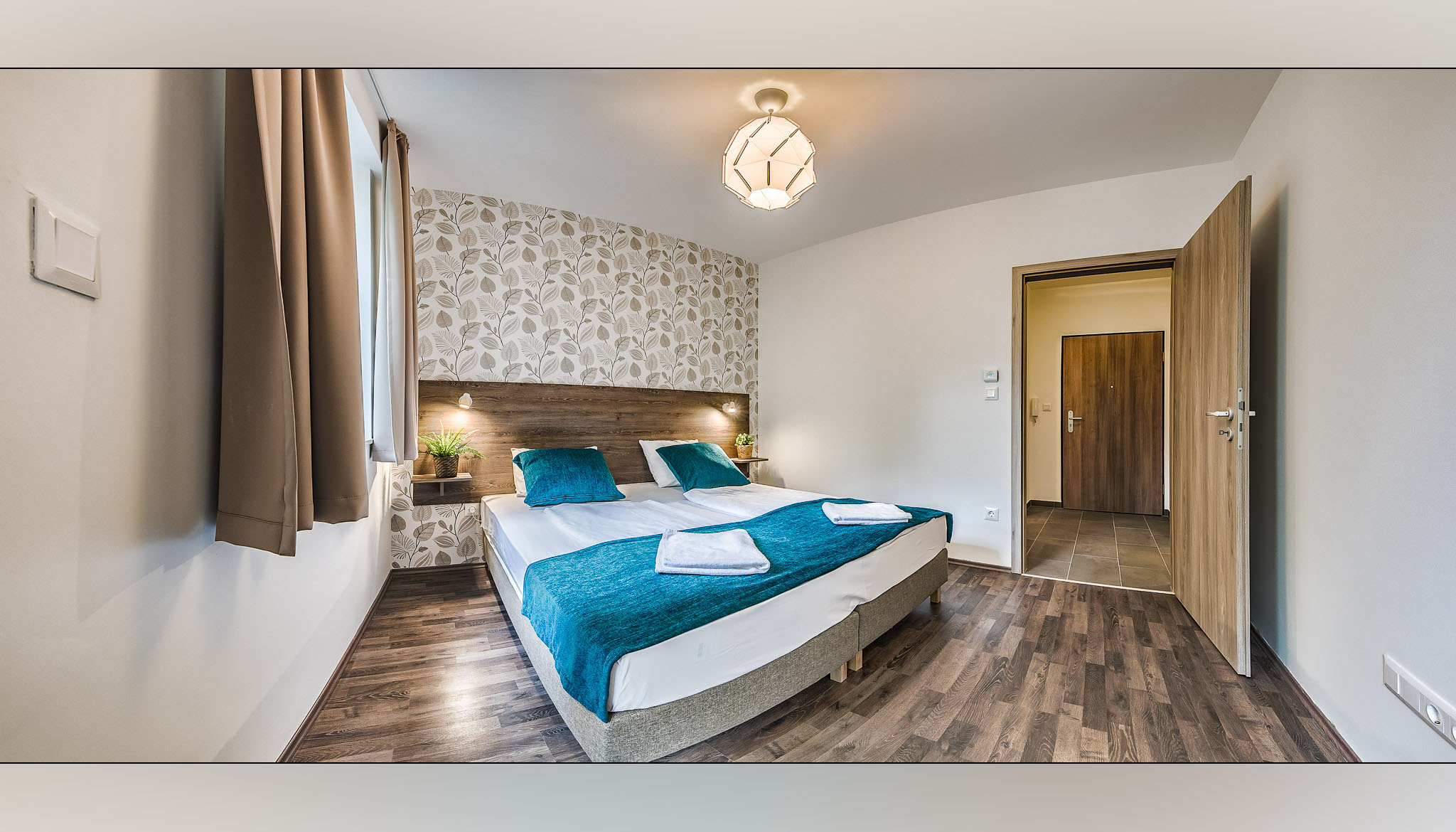
APARTMENT 1
Our 48 sq meter 1 bedroom apartments
are perfect choice for the everyday tourist,
business man and Family…
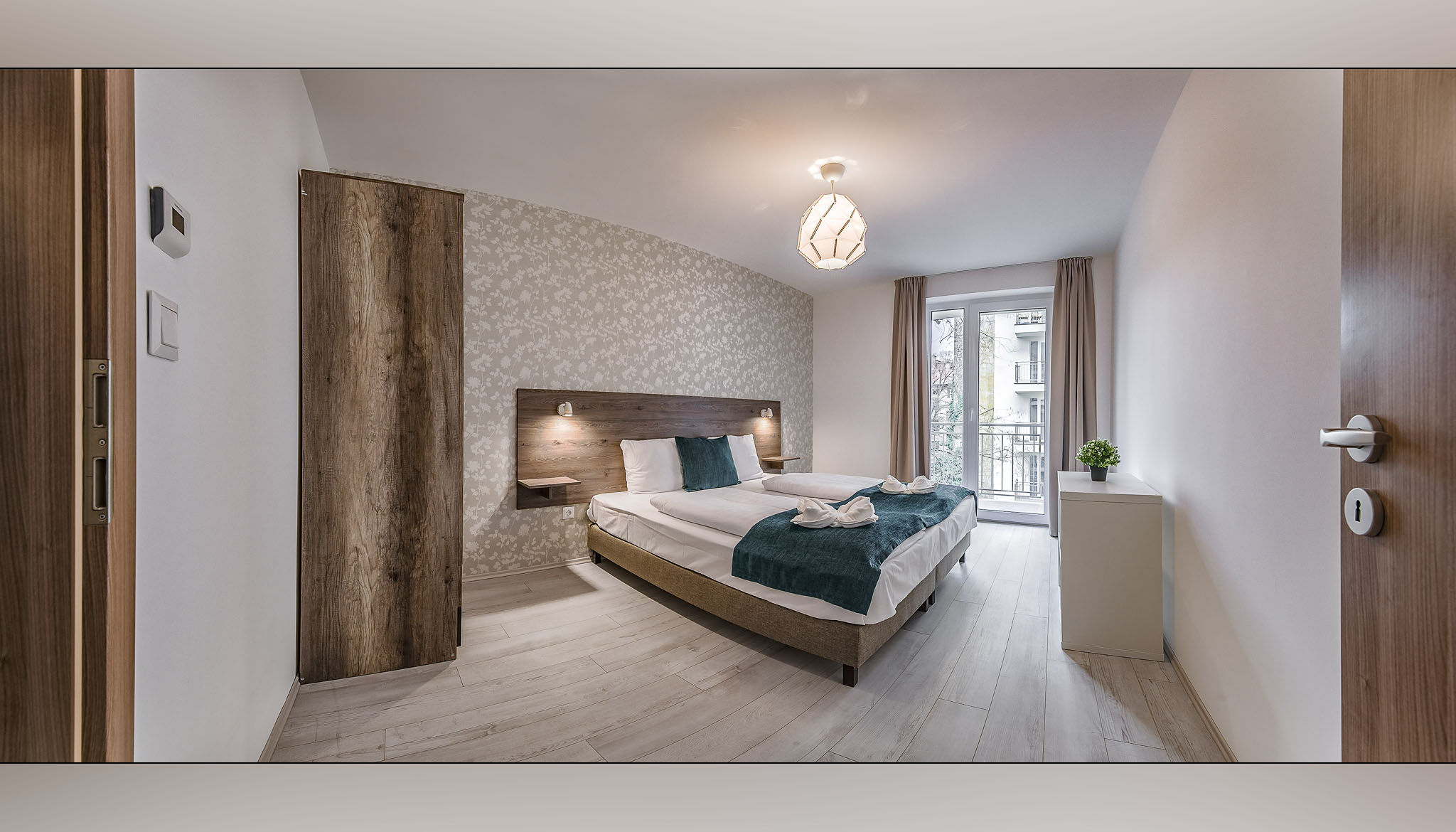
APARTMENT 2
Our 2 bedroom apartments are 73 sq meters
and can comfortable fit
a Family of 5 or even 6 people…
